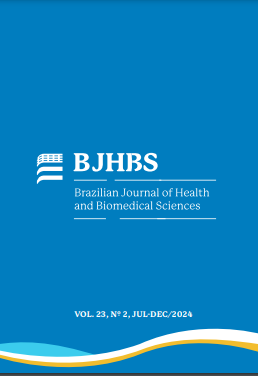The advent of Paracoccidioidomycosis Ceti and new views on lobomycosis (Jorge Lobo’s disease)
DOI:
https://doi.org/10.12957/bjhbs.2024.88701Abstract
The disease caused by the fungus Paracoccidioides lobogeorgii – called lobomycosis – is an uncommon morbid condition that produces skin lesions in humans. Since its formal description in the 1930s, the disease has continued to be the subject of research, especially concerning a better characterization of its etiological, diagnostic, and therapeutic aspects. In addition to a series of questions about the disease’s pathology that have persisted over the decades, the possible involvement of cetaceans, which
have lesions similar to those described in Homo sapiens, must also be investigated. The debate about the etiology of the proliferative verrucous cutaneous lesions caused by non-cultivable yeast that has been reported in dolphins has been almost completely resolved in recent years, as all the evidence points to the etiological agent belonging to the genus Paracoccidioides. There is no molecular evidence of infection by Paracoccidioides lobogeorgii in cetaceans. Based on these preliminary considerations, the objectives of the present article are (1) to review the main etiological, pathogenic, clinical, diagnostic, therapeutic, and ecoepidemiological findings of human lobomycosis and (2) to present the most important aspects of the ceti PCM of aquatic mammals.
Downloads
Downloads
Published
How to Cite
Issue
Section
License
Copyright (c) 2024 Brazilian Journal of Health and Biomedical Sciences

This work is licensed under a Creative Commons Attribution-NonCommercial 4.0 International License.
After the final approval, authors must send the copyright transfer agreement signed by the first author representing each additional author. In this agreement must be stated any conflicts of interest.
Brazilian Journal of Health and Biomedical Sciences de http://bjhbs.hupe.uerj.br/ is licensed under a License Creative Commons - Attribution-NonCommercial 4.0 International. 

